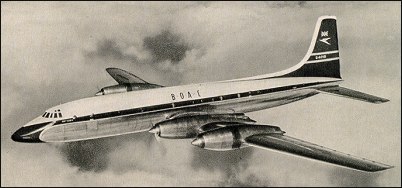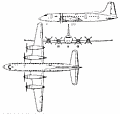 |
Bristol 175 Britannia1952 |  |
| PASSENGER | Virtual Aircraft Museum / United Kingdom / Bristol |
 |
The Type 175 Britannia, the world's first large turboprop transport aircraft, began as a piston-engined design to meet BOAC's 1947 specification for the MRE (Medium Range Empire) transport to carry 32-36 passengers and be powered by four Bristol Centaurus 662 sleeve-valve engines. The aircraft's size was soon increased and consideration given to the installation of Bristol Proteus turbines or Napier Nomad compound engines. After some delay, in June 1948 the Ministry of Supply ordered three Centaurus-powered prototypes but stipulated that the second and third should be capable of conversion to Proteus-engined aircraft. When the first prototype emerged in 1952 it was a much bigger aeroplane with accommodation for more than 80 passengers and powered by Proteus 625 engines. First flight was on 16 August 1952. Development trials were prolonged, partly because of engine icing problems, but on 1 February 1957 BOAC began operating Britannia 102 with 2,906kW Proteus 705 and up to 90 seats on its London-Johannesburg services. A number of versions were developed from the Series 100 aircraft and on 19 December 1957, BOAC began the first turbine-powered North Atlantic service when it put Britannia 312 on the London-New York route. These were 3.12m longer, had accommodation for up to 139 passengers, were powered by 3,070kW Proteus 755 and had a 13,608kg increase in max weight. On the day that BOAC introduced Britannias on the North Atlantic, El Al flew a Britannia 10,328km non-stop from New York to Tel Aviv. The Britannia was a superb aeroplane but was too late to establish itself before the introduction of turbojet transports; only 85 were built, including 23 Series 250 aircraft for the RAF. Canadair developed the Britannia design into the military CL-28 Argus and CL-44 Yukon and the CL-44 series of passenger and cargo aircraft.
|  COMPANY PROFILE | ||||||||||||||||||||||||||||||||||||||||||||||||||||||||||||
 |

|

